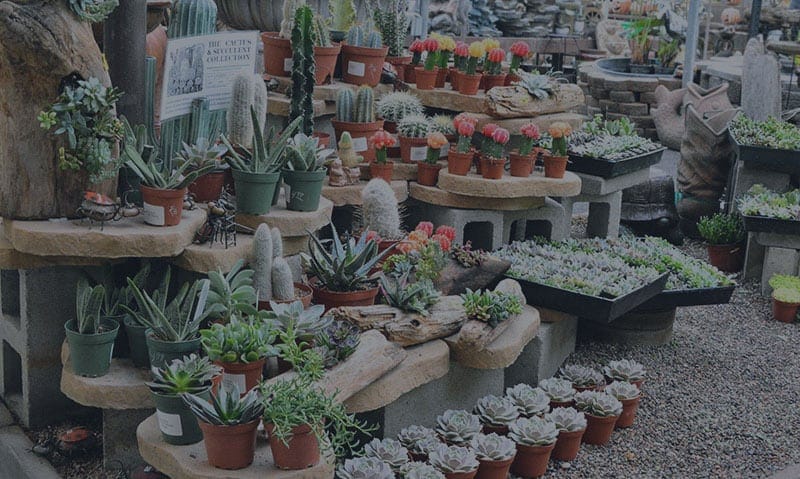Newsletter Articles
How and When to Fertilize Your Summer Vegetable Garden
Written by Kelsey W.
Vegetables represent some of the easiest plants to grow, and many grow so fast that they produce edible parts in a single month. While many of the classic vegetables you might plant will take longer, most of them will still grow in virtually any bed of dirt, even if the conditions aren’t ideal.
However, if you’re interested in growing big, beautiful vegetables with the largest yields possible, your best bet is to make friends with fertilizer. Applying fertilizer to your vegetables is only complicated insofar as it requires you to know which fertilizer is right for your particular vegetables.
But don’t worry; it doesn’t take a Ph.D. to figure out which fertilizer to give your plants and how to use it. Let’s go over the basics of vegetable fertilizer and the easiest methods for making your vegetables big and healthy.
Why Aren’t All Fertilizers the Same?
The fertilizer you might purchase from your local Southern California garden center will feature numbers on the bag or container that represent the ratio of nitrogen, phosphorus, and potassium in the mixture. Some plants like more of one part than another, so you’ll need to find the right fertilizer for your particular vegetables.
Conveniently, most fertilizer companies make it super easy to figure out whether you’re getting the right mixture because they label the bag with the type of vegetables the fertilizer should feed. Tomatoes are a super popular crop grown in backyards across Southern California, and you’ll generally see bags of tomato fertilizer with a 5-10-10 ratio.
For the most part, your fertilizer mixtures will feature some combination of 5s and 10s, and it will come in a granular, liquid, or organic form. As far as popular vegetables go, common ratios include 5-10-10 for carrots, corn, and potatoes, 10-10-10 for leafy things like lettuce, spinach, and onions, and 5-10-5 for vegetables like eggplant, pumpkins, and squash.
Prepping Your Soil with Fertilizer Before You Even Plant
If you’ve already got plants in the ground, don’t worry, you can definitely feed those growing vegetables throughout the season. However, if you have yet to plant your backyard crops or container plants, you can take a few steps in the very beginning of your gardening journey to make the soil as healthy as possible.
If you start early enough, you can take the compost scraps from your kitchen and mix them into the soil. Adding organic matter to the soil is one of the best ways to feed your plants, and it usually costs you nothing to accomplish this since you’ll always have some table scraps here and there.
You can also purchase granular fertilizer from your Southern California garden center and mix it into the top few inches of soil before you plant. Just make sure that the mixture isn’t too thick and that you spread it well because granular fertilizer is strong and can burn plants if it’s too dense.
Timing Fertilizer Application for Popular Vegetables
You can always increase your chances of success in growing vegetables by prepping your soil with fertilizer before you plant, but what about once your vegetables are in the ground? If you’re short on time and can’t devote a lot of your schedule to fertilizing each of your crops individually, simply adding some liquid fertilizer a few times a month can actually help you enjoy pretty solid results.
However, if you’re willing to take a few extra steps and give each of your plants individual attention, here’s what you need to do with fertilizer for some of the most popular backyard garden vegetables grown around Southern California.
Broccoli.
About a month after you put your broccoli seedlings into the ground, you’ll want to add a fertilizer with a high level of nitrogen in it to the soil. If you have time to treat the soil before you plant, broccoli enjoys a 5-10-10 fertilizer mixture.
Carrots.
Keep an eye on your carrots and add fish fertilizer to your carrot plants when they reach six inches tall out of the soil. Like broccoli, they also enjoy 5-10-10 fertilizer, which you can apply before you plant the carrots in the soil.
Cucumbers.
Grow your cucumbers with water and sunshine until they start to produce vines. Once they begin to wander, add a 5-10-10 ratio of fertilizer around every plant. You can also mix compost into the soil before you plant for extra healthy soil and happy cucumber plants.
Peppers.
Each month, your peppers will enjoy a dose of 5-10-10 fertilizer spread around the base of each plant. You can remember to add the fertilizer on the first of every month. You can also mix in a healthy amount of fertilizer into the soil when you initially plant.
Potatoes.
When your potato plants are about a month old, they’ll enjoy a meal of 5-10-10 fertilizer, but you can also use compost as your potato fertilizer, which makes them a super-affordable crop. You can also mix in fertilizer before you plant to give them a healthy head start.
Tomatoes.
Tomatoes are probably the easiest crop to grow, other than some leafy greens that will grow even if you don’t pay any attention to them. Once you start to see fruit on your tomato plants, add a 5-10-10 mixture of fertilizer, and you’ll have a big, healthy crop.
Don’t Worry If You Get the Mixture Wrong
It’s very rare that your vegetables will decide to shuffle off this mortal coil if you give them the wrong fertilizer mixture. You have to add an awful lot of fertilizer to really do any significant damage. As long as you’re just fertilizing on a monthly basis, you shouldn’t have any mishaps.
You can usually just search for generic “vegetable” fertilizer when you visit the garden center and find what you need for just about any plant you’re growing. Note that you might need to choose a different fertilizer if you’re growing strawberries or any sort of berries, but the rest of the things you might have growing in your garden will probably fare just fine with any fertilizer labeled “vegetable fertilizer.”
If you’re not ready to make the leap into fertilizers that have ratios and application instructions and all that complicated stuff, you can simply concentrate on making some fantastic compost and mixing it into the soil for your vegetables.
You can certainly invest in one of those machines that make quick work of table scraps, turning them into compost in mere days, but there’s nothing cheaper and easier than tossing your scraps into a bin in your backyard and letting nature do its thing.
Are There Any “Don’ts” When It Comes to Fertilizer?
There are really only a few habits to avoid when fertilizing your plants. The first is that you should avoid adding fertilizer on the same day you put your plants into the ground. Create your soil mixture a week or two – or even more – before you put your plants into the ground.
Another habit to avoid is sprinkling the fertilizer on anything but soil. You want to avoid getting any fertilizer on leaves and stems. Only apply fertilizer to the soil because it can burn leaves, especially if it’s applied to the leaves in a thick dose.
A final habit to avoid is to always think twice before adding more fertilizer. It’s much better to under-fertilize than it is to give a plant too much fertilizer. Your plants can certainly grow without fertilizer, but they’ll have a much tougher time if you over-feed them. Too much fertilizer can actually make plants a little stressed out, and drought conditions can actually exacerbate this problem.
Grow a Big, Beautiful Vegetable Garden with Help from Green Thumb Nursery
Make sure your vegetables are their happiest and healthiest with plants and advice from the pros at Green Thumb Nursery. Growing vegetables is a hugely rewarding activity, and we can help make sure your vegetables produce great yields that will help you bring food from your backyard to your kitchen table. Visit one of our Southern California garden center locations today for advice and inspiration for your next gardening project.
Do you like what you see? Sign up for our weekly newsletter to get content like this every week!
CLICK HERE TO SIGN UP!


